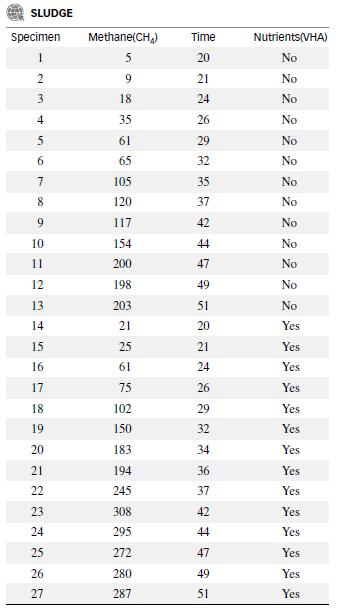Refer to the Journal of the Institute of Engineering (Vol. 8, 2011) study of methane gas (milligrams
Question:
Refer to the Journal of the Institute of Engineering (Vol. 8, 2011) study of methane gas (milligrams per liter) emitted from wastewater treatment sludge, Exercise 12.42. Recall that two different types of treated sludge were investigated: (1) sludge without nutrients added and (2) sludge with nutrients (VHA) added. Data for n = 27 sludge specimens are reproduced in the table on p. 683. Note that the table includes the variable, length of time (in days) the sludge was processed The researcher estimated the emission rate (i.e., the rate of increase in emitted methane gas for each additional day of treatment) for both untreated and treated sludge. Use regression to determine if the emission rates differ for the two types of sludge, and if so, provide an estimate of each emission rate.

Data from Exercise 12.42
Wastewater treatment systems are designed to maintain the chemical, physical, and biological integrity of water. These systems, however, tend to generate various greenhouse gases, such as methane (CH4). The Journal of the Institute of Engineering (Vol. 8, 2011) published a study of the amount of methane gas (milligrams per liter) emitted from wastewater treatment sludge. Two different types of treated sludge were investigated: (1) sludge without nutrients added and (2) sludge with nutrients added. The specific nutrient studied was volatile fatty acids (VFA). Data for n = 27 sludge specimens are listed in the table. Use regression to determine if the mean amount of methane gas emitted differs for the two types of sludge, and if so, provide a 95% confidence interval for the magnitude of the difference.
Step by Step Answer:

Statistics For Engineering And The Sciences
ISBN: 9781498728850
6th Edition
Authors: William M. Mendenhall, Terry L. Sincich





